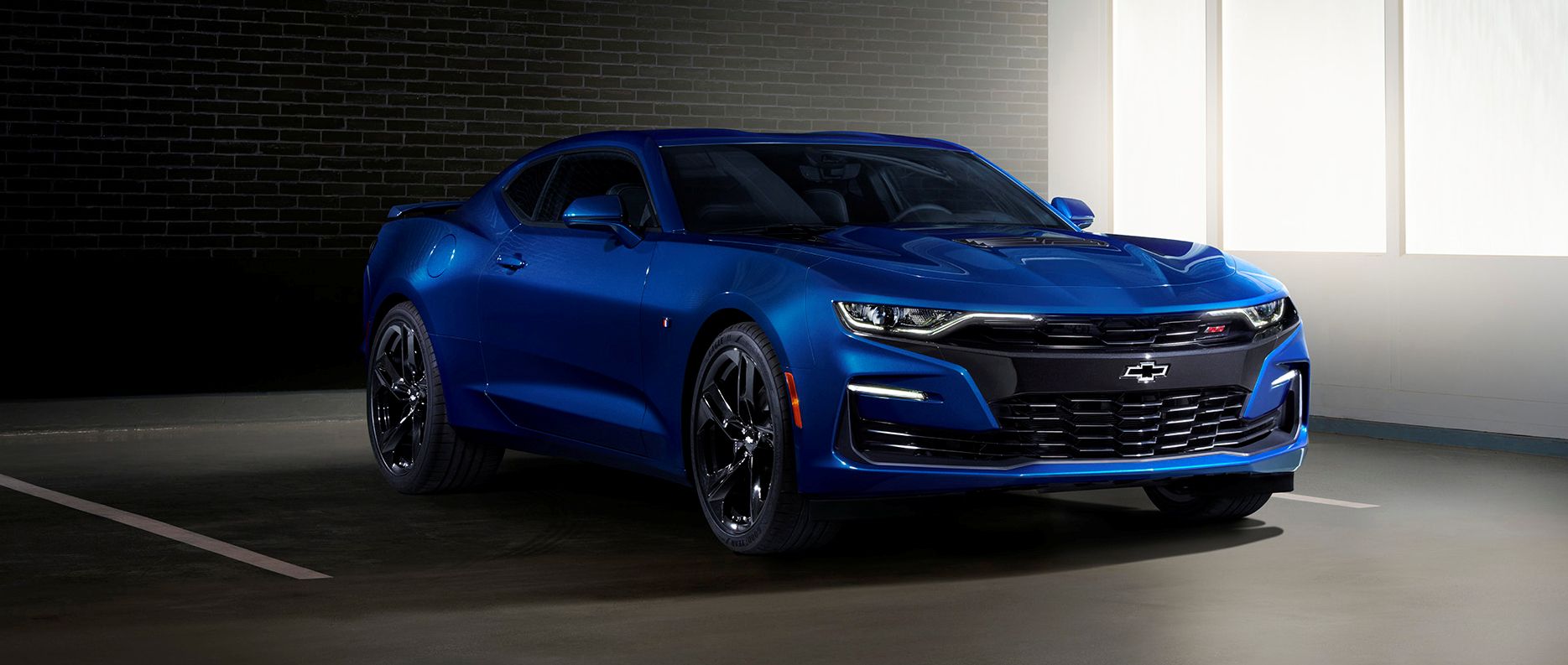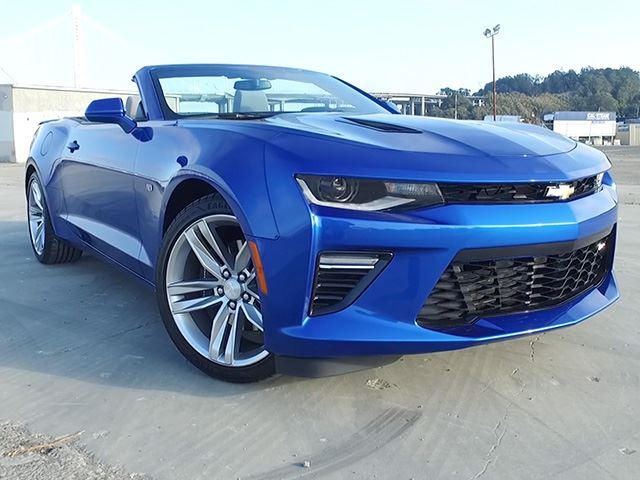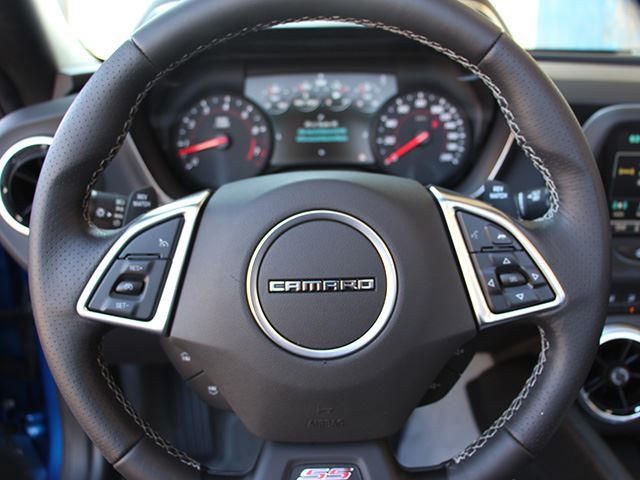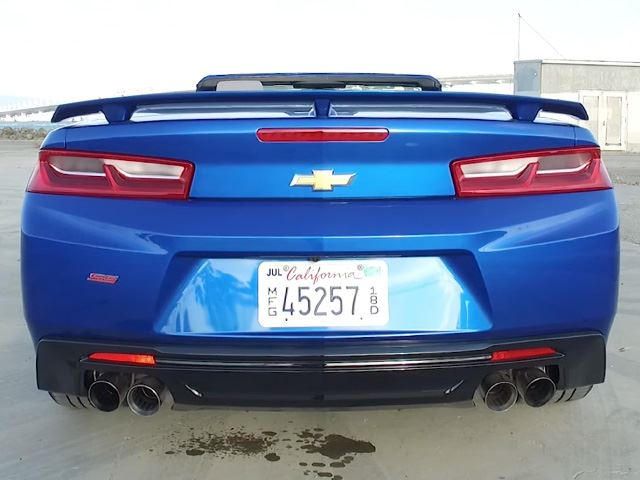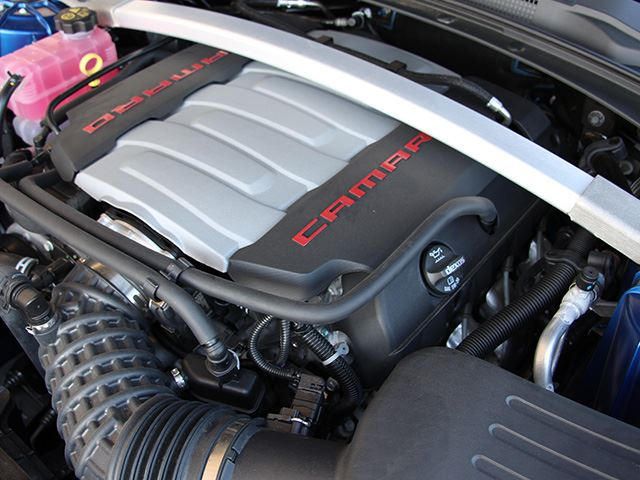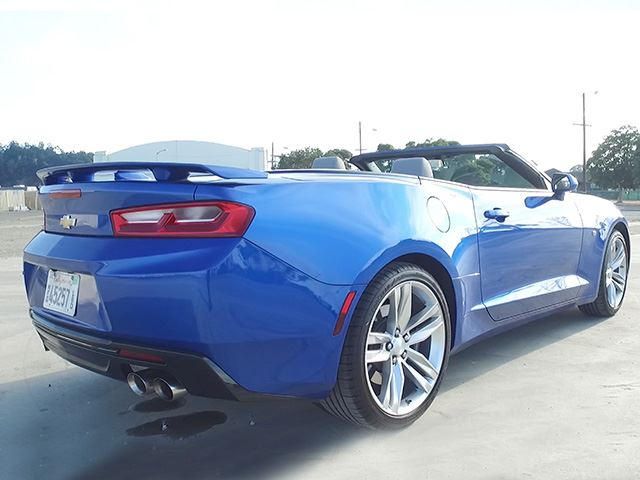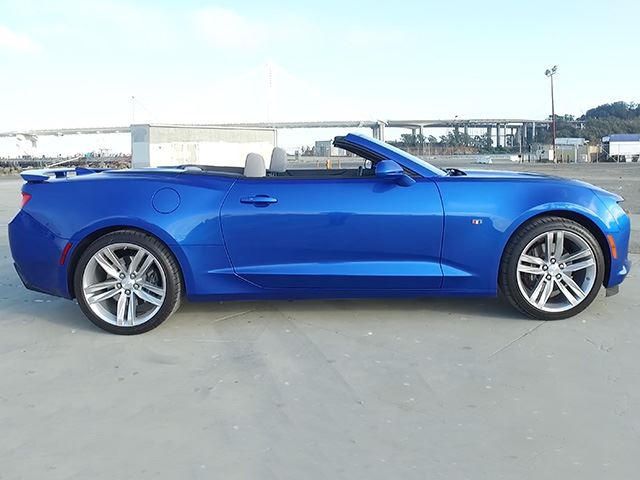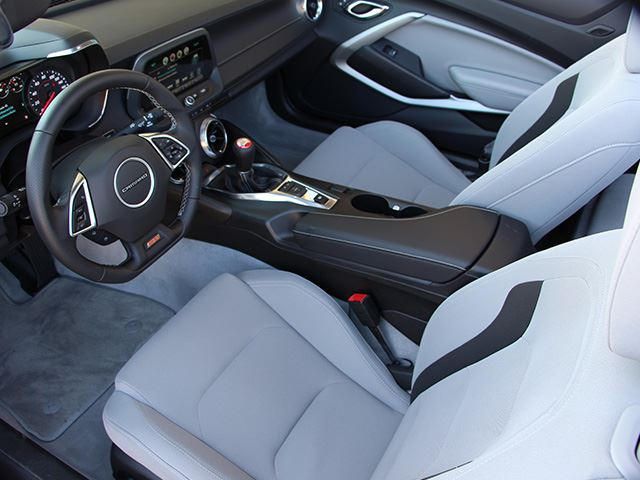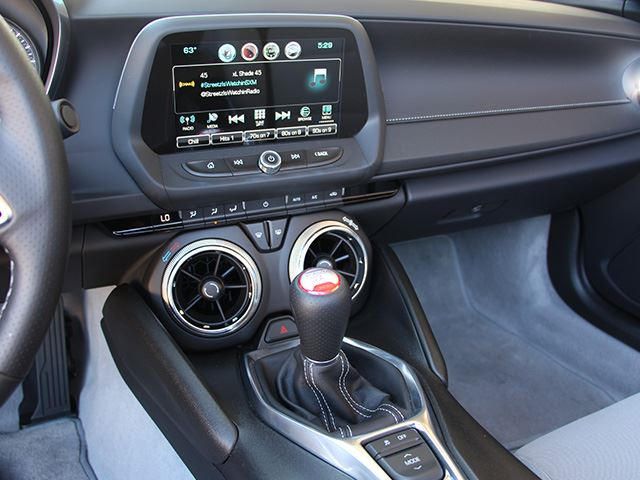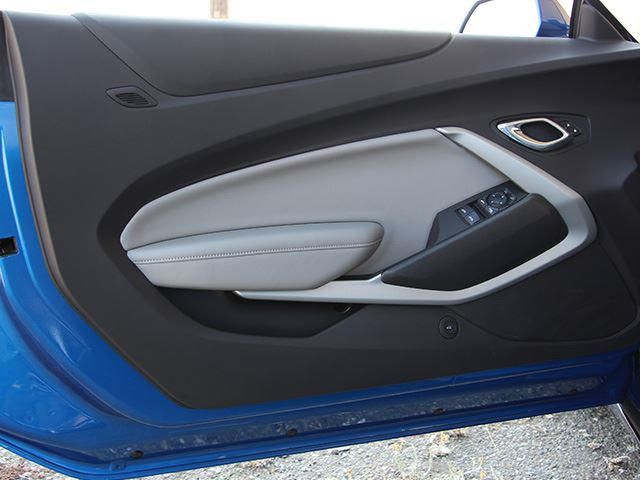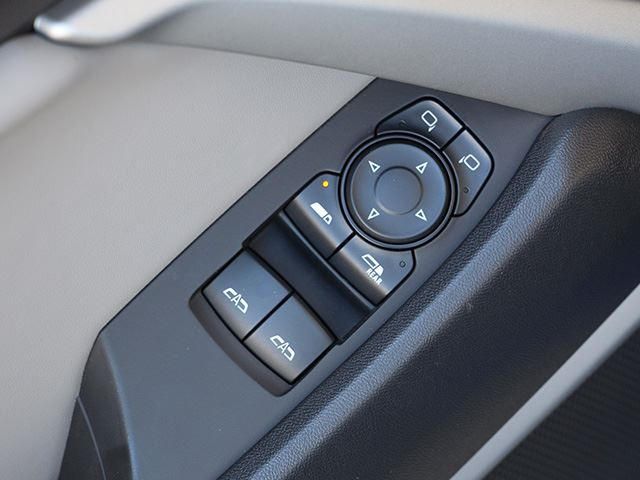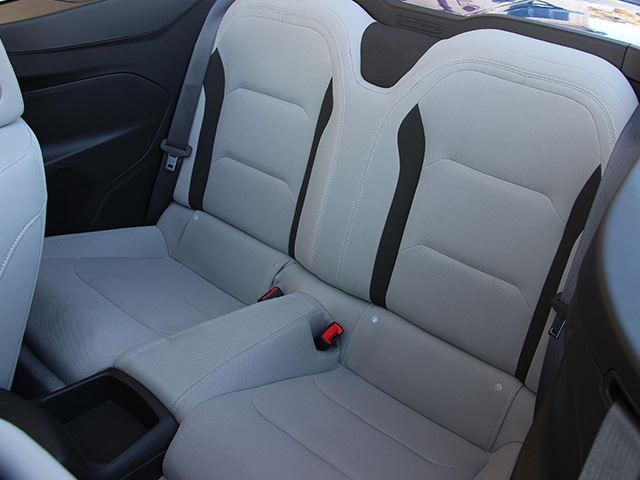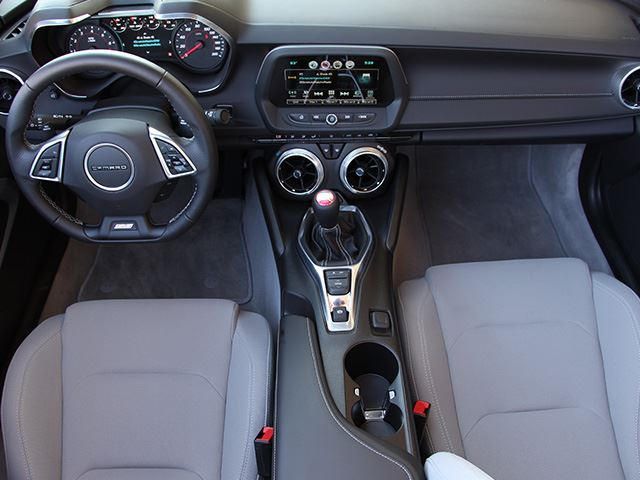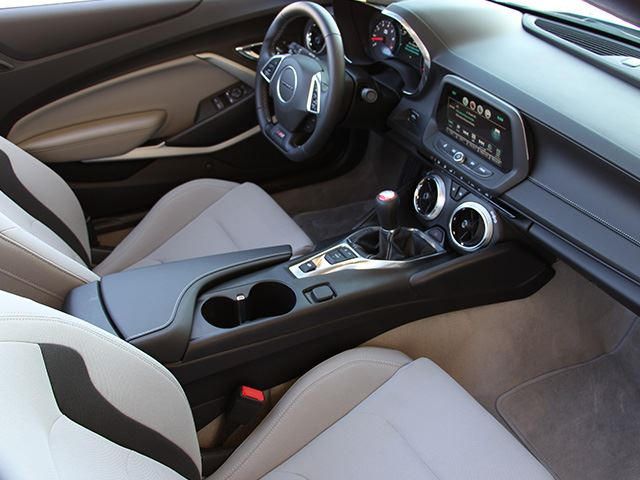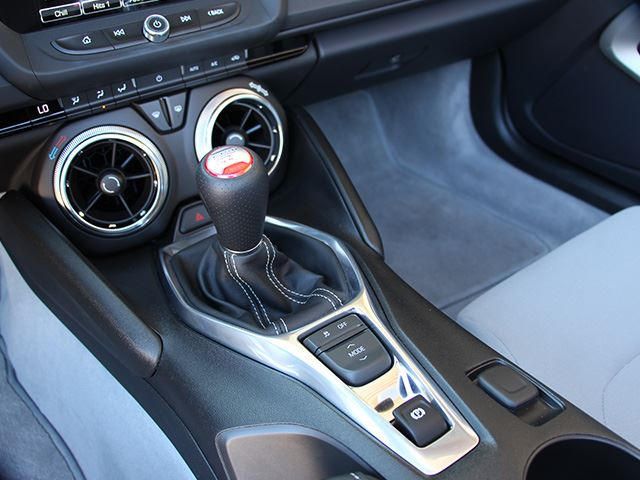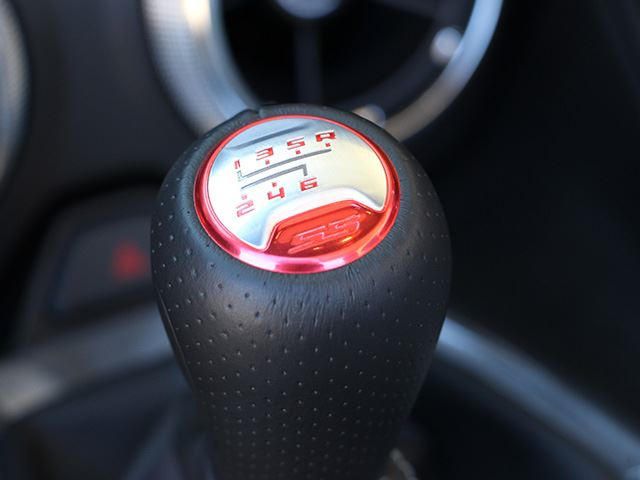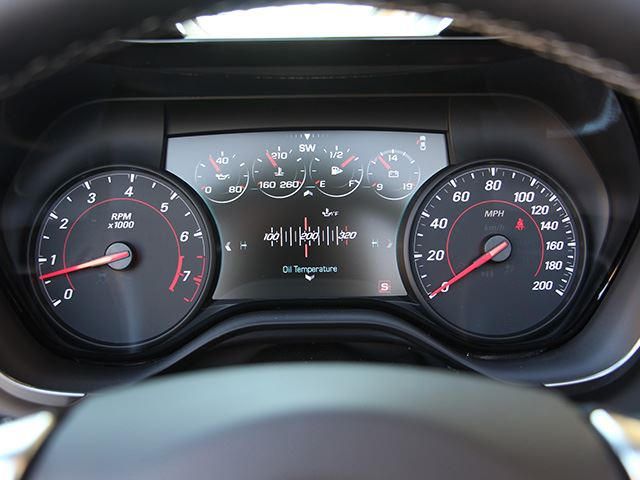2016 Chevrolet Camaro SS Review: 4 Reasons Why It's Better Than The Mustang GT
As far as missed opportunities go, the chance to have both the 2016 Ford Mustang GT and 2016 Chevrolet Camaro SS in the CarBuzz garage is up there with Apple's third co-founder deciding to cash out his 10 percent stake in the company for $800 back in 1976. Both models were convertible, packed V8s and had manual transmissions. They match up pretty evenly, (we gave the Ford high marks when we drove it) but after a week behind the wheel of the Camaro SS we found four things that might make you consider it over the Mustang GT.
1. The six-speed manual offers active rev-matching
For a split second we wondered why Chevy had decided to include flappy paddles behind the steering wheel of a muscle car with a manual transmission. Then we looked a bit closer and realized that they were only there to turn on/off the Active Rev Matching feature of the SS' Tremec TR6060 six-speed manual transmission. Automatic rev matching is a more common option on pricier cars, such as BMWs and Porsches. Our tester wasn't exactly cheap at $45,390 but it's not in the same category (technically or price-wise) as the offerings from Germany's luxury giants, and as such we were surprised to learn that the muscle car would automatically match the revs on downshifts.
Ford offers automatic rev matching on the 2016 Mustang GT, but you only gain access to the feature if you spec the car with a six-speed automatic transmission. Some are decrying the rise of tech aids in manual cars, and we don't doubt many drivers will never even touch the Camaro SS' Active Rev Matching function as they prefer to match revs themselves. But those who aren't looking to become heel-and-toe masters will appreciate the option.
2. That sweet, sweet sounding dual-mode exhaust
You'll need to shell out $895 in order to get the dual-mode exhaust on the 2016 Camaro SS, but that is money well-spent if you ask us. There are four settings: Stealth, Tour, Sport and Track. On the "Track" setting the Camaro SS absolutely roars, with the naturally aspirated 6.2-liter LT1 V8 engine singing its song at top volume as electronically controlled valves sidestep the muffler when you hit the gas. The Mustang GT certainly doesn't sound like crap, but if you want an active exhaust you're going to have to hit up the aftermarket. The sound a big V8 muscle car makes is very important, and it's tough to top the Camaro SS' rumble when it's packing Chevy's dual-mode exhaust.
3. The Camaro SS doesn’t handle like a muscle car
GM built the new Camaro on its Alpha platform, which replaces the heavier Zeta platform the last model rode on. The result is a much lighter car and a tighter ride. The 2016 Camaro SS, when equipped with a manual transmission, is 223 pounds lighter than the 2015 model. In addition, the 2016 sees a 28% bump in structural rigidity. The SS in convertible guise still weighs in at just a hair under two tons, but even though it has a lot of weight to drag around it still handles more like a sports car than a drag strip superstar. No one will mistake this muscle car for a Miata but we were genuinely surprised at how well it hugged corners and at how poised it was through slaloming mountain roads.
Smashing the gas pedal to the floor after taking a tight turn and hearing that burly V8 roar is something that never, ever gets old. Our tester didn't come equipped with GM's optional Magnetic Ride Control, a $1,695 extra, yet we still came away thoroughly impressed. By contrast, the Mustang just learned what an independent rear suspension was, and while it isn't the tail-happy killer car that all those Cars & Coffee videos depict it's not as poised as the SS on curvier sections of asphalt.
4. The Camaro SS makes more power
Ford got the jump on Chevy, launching the new Mustang back in 2014 as a 2015 model. The new Camaro made its debut in April of 2015 and didn't start hitting dealer lots until months later. But there is an advantage to coming out the gate late. Chevy was able to see the power figures produced by the Mustang GT's 5.0-liter V8 engine, 435 horsepower and 400 lb-ft of torque, and ensure that the SS topped that. The V8 in the Camaro SS pumps out 455 horsepower and 455 lb-ft of torque. The convertible sprints from 0-60 mph in just 4.1 seconds and runs the quarter mile in 12.5 seconds. The convertible Mustang GT completes the same sprints in 4.3 seconds and 12.8 seconds, respectively.
While the new Camaro SS has refined its on-road attitude the reality is that it's still an American muscle car at heart, which means that it'll be judged first and foremost on the drag strip. When matched up against the Mustang GT the more powerful Camaro SS wins comfortably, this despite weighing over 100 pounds more than the competition.

